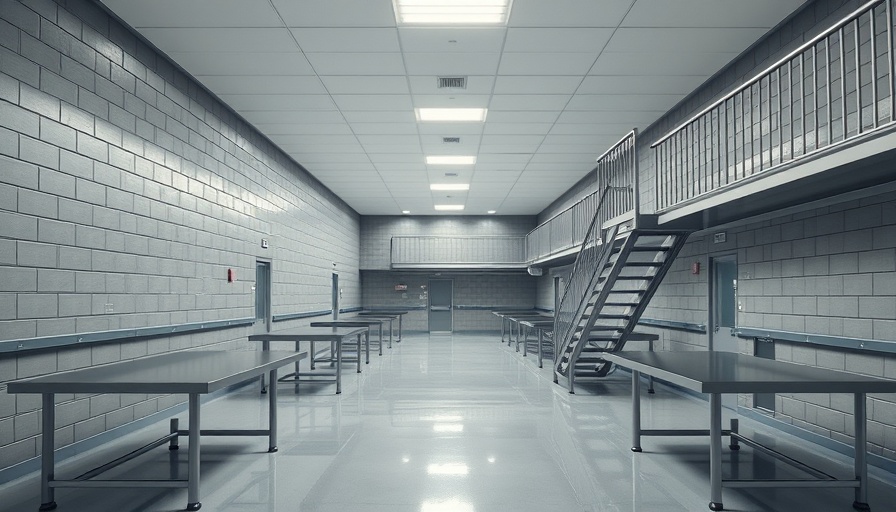
Revitalizing Utah's Correctional System: A New Era for Inmate and Staff Welfare
The recently completed Utah State Correctional Facility (USCF) stands as a paradigm shift in the correctional landscape. With safety, security, and comfort at its core, this facility—costing a staggering $1.5 billion—replaces the aging Utah State Prison that had served its purpose since 1951. Built to accommodate around 3,600 inmates, the USCF methodically integrates design elements intended to enhance inmate rehabilitation and improve working conditions for staff.
Designing for Rehabilitation
One of the cornerstones of the USCF's design is the direct-supervision model. This system promotes constant engagement between correctional officers and inmates, breaking down barriers traditionally found in prison environments. Jerry Jensen, deputy director of facilities management, emphasizes, "Our goal was to improve living conditions for inmates as well as classrooms that offer better educational opportunities." The facility’s architecture, sprawling over 1.3 million square feet, incorporates natural light and open spaces, creating a less restrictive and more rehabilitative atmosphere.
Insider Concerns and Community Engagement
The new facility is not without its challenges. With high expectations from families, community advocates, and prison management, the dialogue has shifted towards addressing longstanding problems such as inadequate healthcare and staffing shortages within the department. Recently, Utah’s corrections chief Brian Redd faced questions from inmate family members voicing concerns over safety and healthcare services, issues exacerbated by understaffing.
While the new facility represents progress, families are anxious about the potential pitfalls. Redd noted, "There are many dedicated staff trying to do the right thing, but we need to cultivate a culture that prioritizes staff training and morale. It’s vital we also explore alternatives for non-violent offenders and find ways to effectively address long wait times for necessary treatments." This focus on community engagement is echoed in initiatives led by the Utah Prisoner Advocate Network (UPAN), which aims to illuminate the voiced concerns of families and push for reforms.
Future Directions: Enhancements and Opportunities
As Redd delves deeper into staffing issues, plans are on the horizon for further enhancements to inmate welfare. A particularly progressive initiative being evaluated is the establishment of a nursery within the facility, allowing incarcerated mothers to care for their young children. Additionally, the implementation of programs focusing on rehabilitation, such as tattoo removal and addiction treatment, could mitigate the factors leading to recidivism.
The facility’s administration recognizes the substantial role of mental health support for inmates. Current discussions highlight the necessity of having enough certified professionals to assist with mental health issues, which has been a critical pain point in the state's penal systems.
A Holistic Approach to Correctional Facilities
The USCF illustrates a growing trend in the US correctional landscape toward improving safety and creating rehabilitative spaces. This shift is increasingly informed by an understanding that successful rehabilitation often hinges on the conditions within correctional facilities. By prioritizing natural light and minimizing prison-like structures, USCF aims to set a precedent for how correctional environments should evolve in the future.
Final Thoughts: What It Means for Inmates and Society
The comprehensive redesign of Utah's correctional facilities signifies a commitment not only to institutional reform but also to a broader societal acknowledgment that rehabilitation is not merely a potential outcome but a necessity. In an era where the stigmas surrounding incarceration remain prevalent, the focus on humane conditions could redefine how society perceives correctional facilities. As USCF aims to foster healthier relationships between staff and inmates, it embarks on a path meant to alleviate the cycle of recidivism—truly an opportunity for transformation, for individuals and society alike.
 Add Row
Add Row  Add
Add 




 Add Row
Add Row  Add
Add 

Write A Comment